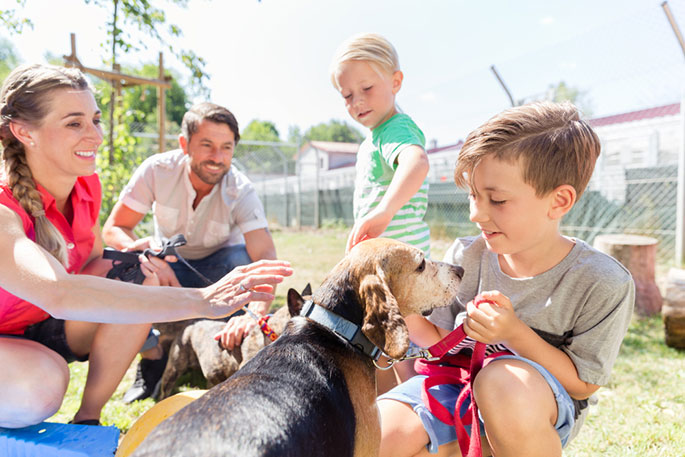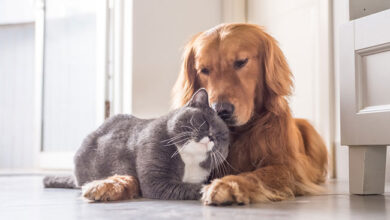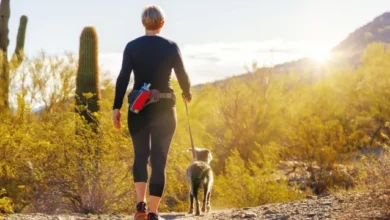
Let’s say, one day, you decide to bring this cute little puppy or maybe a grown-up dog from the shelter as soon as it melts your heart. Now that you have found the pup a new home, the real challenge begins – getting it to adapt to its new family. I am going to share some excellent tips for adopting a shelter dog for you today; keep reading.

Shelter dogs often take a long time to transition into their new home and may even have separation anxiety. As a result, you might see them behaving oddly in the initial few weeks.
But don’t worry, here’s a holistic guide on how to help your rescued dog’s transition into your family smoother.
Read More:
- How to Prepare For Your New Pup
- 10 Ways to Stop Your Dog from Eating Poop
- 4 Tips for Getting Your Dog on a Good Schedule
- Canine Companion: 5 Key Items to Bring for Your Dog on a Road Trip
- How to Choose the Best Mobile Dog Grooming Service
1. First and Foremost, Be Patient
Your dog may have been abandoned by someone s/he loved. Or its previous owner may have passed away. Or maybe the previous owner was abusive. It could be a number of things!
You might be able to find out what your dog’s background was – the shelter will help you with that. But you cannot expect the dog to just let of that trauma, anxiety or sadness so easily.
So be patient. Give it some time. Try to understand the dog’s hesitation and try to help it out over time. Remember, the transition can take up to several weeks, so you need to keep calm and keep trying.
2. Create A Schedule and Stick to It
A great way to get your dog feel more involved in your family is to slowly create a routine for it. Some elements should be incorporated in this schedule from the first couple of days, while others can slowly be integrated over time.
Here are some of the things to incorporate in the schedule:
- Set up the meal times around the day and follow that schedule. It is also recommended that you find a dedicated spot in the house for your dog’s meals.
- Take your dog out on a walk every day at the same time. If possible, follow the same route.
- Chalk in some playtime every day when you teach him or her some basic dog commands.
Making and maintaining a schedule helps the dog to know what will happen throughout the day, and this, in turn, helps in reducing their anxiety and feeling more at home.
3. Get The Dog Used to the Home Food
The dog by now is used to the shelter food, and transitioning it to take different foods might be a feat. Their appetites may not give in or it may cause them to have upset stomachs. All you need is a pre-planned meal portioning by which you can change its eating habits.
A. Make Sure The Food You Picked Is Appropriate
Consult a vet and the shelter regarding the food brands and portions. Remember, not all sizes and ages of dogs require the same amount of food in a day!
Ask the shelter about the number of meals and the type of dog-food they used, because it may clash with the type of foods you want to feed them.
B. Take it Easy
Don’t put your dog on the new diet right away because this may disturb its delicate stomach. Instead, start by slowly adding the new food in the shelter one. Keep the shelter-home food ratio of 2:1 for at least a week before increasing the home one and reducing the shelter one to 1:1.
If you notice that the dog is not having any health problems with the dietary changes, shift to the home food and stop feeding them the shelter food. You may give them additional treats, apple sauce or gravy to motivate them, but make sure they don’t get entirely dependent on them – they may not take their meals without it.
C. Look Out for the Poop
You can tell a lot about a dog’s health from its feces. If you notice your dog having diarrhea or runny loose stools, it may have a microbial infection or gastrointestinal distress. Consult with the vet as soon as you can. The basic step before that is to shift to the old shelter diet in case of eliminating the possibility of the new food being the problem.
However, if your dogs are having difficulty to pass stools as they are coming out small and hard, it may indicate low liquid intake or overconsumption of insoluble fibers. In such cases, talk to your vet and get your dog the best low residue dog food, as they contain very low fibers and fats thus increasing the digestibility in dogs.
This not only makes it easier for your dogs to pass stools easily but also reduce the poop volume and rancid smell if it has any.
D. Place Matters
Your dog may not be comfortable in the place you have set the food bowl in and thus refuse to take his food. You can try putting the bowl in a quieter area and let him eat alone. If he/she prefers this location, incorporate it in the daily schedule.
4. Housetrain Your Dog
Your rescued dog may already be housetrained, but since it has spent some time at the shelter and since it’s no longer with its old family, it’s better to housetrain them.
You need to find the place where your dog can relieve itself and take it there repeatedly and spend some time there so that the dog can understand that this is their new loo.
Final Words
Your new furry friend may have had a dark past, so you can’t expect it to open up and be happy right away. It will be wary, but you need to be patient and keep pushing. By taking care of it, giving it the best necessary food, and spending time with it routinely, you will gradually gain the trust of your dog.
Once that happens, you can expect your newly rescued shelter dog to adapt to its new home and its new family. Just don’t give up!



